Looking to add a little fun and functionality to your garden? Why not try making some garden hoops! This comprehensive guide will answer all of your questions about these popular garden fixtures, from what materials you’ll need to how to install them. So read on and get ready to create some beautiful garden hoops of your own.
Pros of Garden Hoops
Garden hoops have a number of advantages over other gardening supports.
- They’re easy to set up and take down, so you can move them around as needed.
- They’re also lightweight and inexpensive, making them a great option for small gardens or tight budgets.
- Plus, they give your plants the support they need without blocking sunlight or interfering with watering.
If you’re growing vining plants, look for hoops that have an extra crossbar for added stability. For smaller plants, like herbs or flowers, mini hoops or tomato cages are a good option.
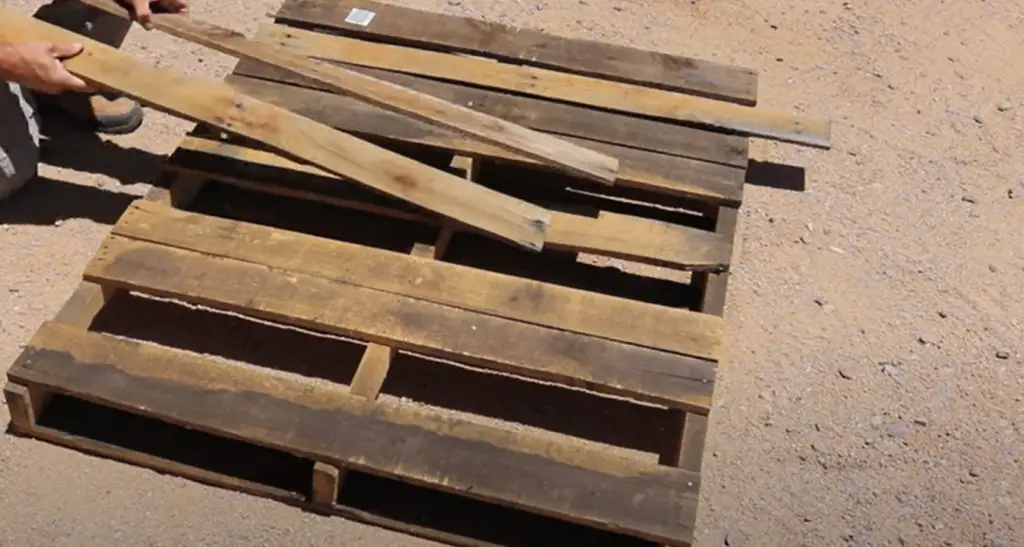
No matter what type of garden hoop you choose, be sure to look for one that’s made from rust-resistant materials. This will help it last longer and keep your plants safe from harmful chemicals. [2]
Extend Growing Season
Garden hoops are a great way to extend your growing season and provide support for plants. A greenhouse is a great place to grow vegetables all year long because it creates a perfect environment for them to grow in.
There are a few things to consider when choosing garden hoops:
- The size of your garden.
- The type of plants you are growing.
- The climate you live in.
The garden hoops come in different sizes and styles. The most common size for a hoop house is three feet in diameter, but you can also find ones that are two or four feet in diameter. This will depend on how much space you need in your yard for plants!
There are different types of garden hoops that you can choose from, depending on how high and what shape you need your plants to grow.
The type of garden hoops you need will depend on the climate where they are being used.If you live in a colder region, it might be better to buy a plastic or metal version of your snow shovel instead of one made from another material like polystyrene.
Polystyrene can break easily if it is exposed to extreme conditions, like those found in high altitudes or coastal areas near the ocean. The humidity in these areas can cause the polystyrene to break apart.
Garden hoops can help you grow your plants for a longer time. This is helpful for all types of gardens. With a little research, you can find the perfect garden hoops for your needs. [2]
Bountiful Harvest
No matter what you’re growing in your garden this season, chances are good that you want a bountiful harvest. And while there are many factors that contribute to a successful crop (including soil quality, sunlight, and water), one of the most important is using the right type of support system for your plants. That’s where garden hoops come in.

Garden hoops, also called plant supports or tomato cages, are structures that you place around your plants to help them grow upright and prevent them from falling over under the weight of their fruits or flowers.
They’re particularly helpful for tall or top-heavy plants, like tomatoes, cucumbers, and zucchini. But they can also be used for shorter plants, like strawberries, that need a little extra help staying off the ground.
Easy and Inexpensive to DIY
Garden hoops are an easy and inexpensive way to support your plants. You can make them out of any type of material that is strong enough to hold up the weight of the plant, such as PVC pipe, metal tubing, or even bamboo.
There are a few things to keep in mind when you’re making garden hoops:
- The material you choose should be strong enough to support the weight of the plant.
- The hoops should be tall enough so that the plants can’t touch the ground.
- You’ll need to secure the hoops in place so they don’t blow away in the wind.
Here’s a quick and easy tutorial on how to make garden hoops out of PVC pipe:
- Cut the PVC pipe into lengths that are slightly taller than the plants you want to support.
- Make a small hole in one end of each piece of pipe.
- String a length of twine through the holes and tie it off.
- Place the hoops over your plants and secure them in place with stakes. [2]
What to Consider Before You Start
When it comes to making garden hoops, there are a few things you’ll want to keep in mind before you get started.
- First, consider the size of your garden. If you have a large garden, you’ll need larger hoops.
- Second, think about the type of plants you’re growing. Vining plants will need sturdier, taller hoops, while smaller plants can get by with shorter, lighter hoops.
- Finally, think about the climate where you live. If you live in an area with high winds or heavy rains, you’ll need to make sure your hoops are securely anchored into the ground. [2]
Materials and Tools Needed
In order to make garden hoops, you will need the following materials and tools:
- PVC pipe
- Tape measure
- Pipe cutter
- Hacksaw (optional)
- Wire cutters (optional)
- Ruler or straight edge (optional)
First, measure the length of PVC pipe you will need.
Next, use a pipe cutter or hacksaw to cut the PVC pipe into pieces. If you are using a hacksaw, be sure to wear gloves and eye protection.
Finally, use wire cutters to trim any sharp edges on the PVC pipe.
Garden Hoops for Raised Beds
If you have raised beds in your garden, then you know how difficult it can be to keep the plants contained. Garden hoops are a great way to achieve this! Not only do they look great, but they also keep the plants from sprawling out and taking over the rest of the garden.
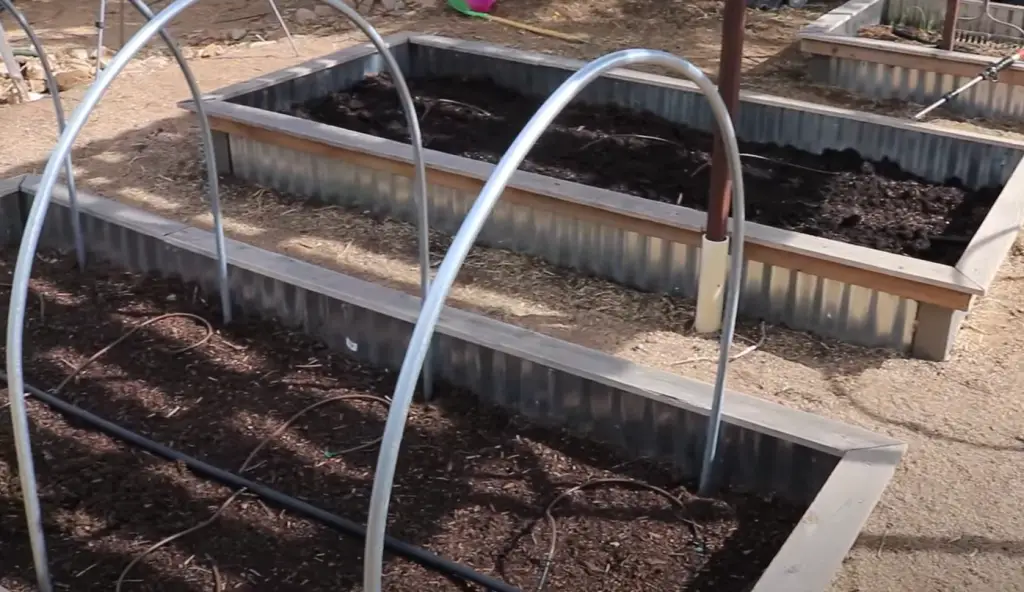
There are a few different types of garden hoops that you can choose from. The most popular type is the metal hoop. These are great because they are very durable and will last for many years. However, they can be a bit expensive.
If you are looking for a cheaper option, then you can try plastic garden hoops. These are not as durable as metal hoops, but they will still get the job done. Another option is to use bamboo garden hoops. These are a bit more fragile than metal or plastic, but they are much cheaper.
No matter which type of hoop you choose, you will need to know how to put them together. This can be a bit tricky, but it is not impossible. The first thing you need to do is measure the area that you want to put the garden hoops in. Once you have the measurements, you will need to cut the pieces of metal or plastic to size.
If you are using metal garden hoops, then you will need to use a drill to create holes for the screws. If you are using plastic or bamboo hoops, then you can simply use a sharp knife to make the holes.
You will need to start with the bottom hoop and work your way up. It is important that you do not overtighten the screws, as this could cause the hoop to break.After you have assembled all of the garden hoops, you will need to secure them in place. This can be done by using stakes or by attaching them to the side of a raised bed.
FAQ
How Do You Make a Wire Hoop for a Garden?
There are a few different ways that you can make wire hoops for your garden.
One popular method is to use PVC pipe and zip ties.
- First, you’ll need to measure the circumference of your desired garden area and cut the PVC pipe to size.
- Next, take the zip ties and fasten them around the outside of the PVC pipe at equal intervals.
- Once the zip ties are in place, you can then shape the PVC pipe into a hoop and secure it in place with more zip ties.
Another common method for making garden hoops is to use metal fencing material. This method is similar to the PVC pipe method, but you’ll need to use pliers to bend the metal fencing material into shape.
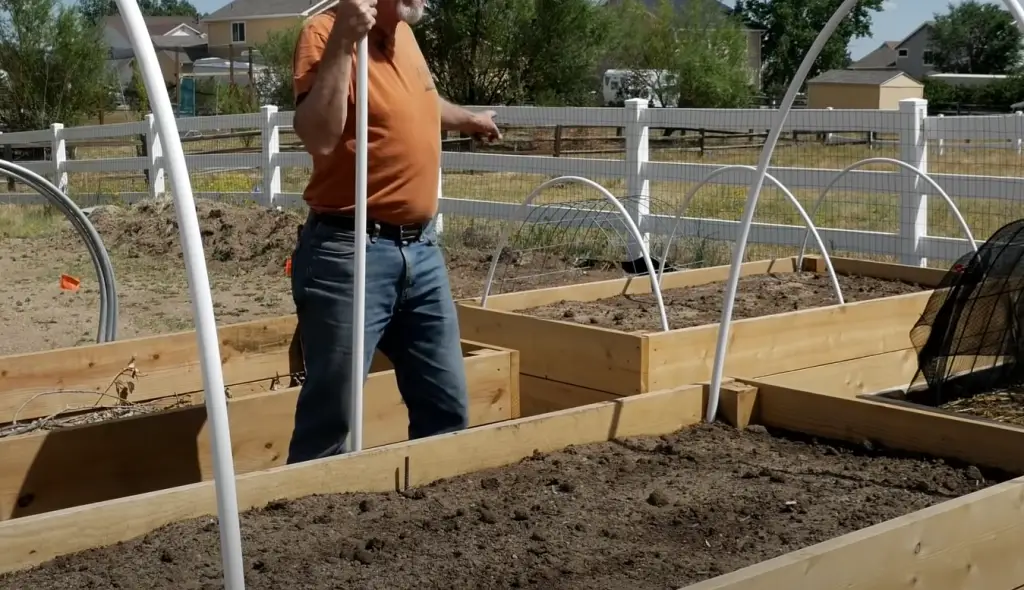
Once you have the desired shape, you can then secure the metal fencing material in place with zip ties or wire.
No matter which method you choose, making garden hoops is a relatively easy and inexpensive way to create a protected space for your plants.
How Do You Make a Hoop House for a Garden?
There are a few different ways that you can make garden hoops.
- One popular method is to use PVC pipe. You will need to cut the PVC pipe into lengths that are appropriate for your garden bed and then attach them together using PVC connectors.
- Another option is to use metal tubing. You will need to cut the tubing to size and then weld or solder the pieces together. If you are not comfortable doing this, you can always hire a welder to do it for you.
Once you have your garden hoops assembled, you will need to cover them with some type of material. This could be plastic sheeting, shade cloth, or even old sheets or blankets. Make sure that the material you use is secured tightly so that it does not blow away in the wind.
Now that you have your garden hoops set up, you can start planting! You can plant seeds directly into the ground or start with seedlings that are already growing. If you live in an area with a lot of deer, you may want to consider using a deer-resistant plant such as lavender or rosemary.
You can water your plants using a hose or a sprinkler system. Be sure to water the base of the plants and not the leaves so that the water can soak down to the roots. Depending on the type of plants you are growing, you may need to fertilize them every few weeks. You can use a commercial fertilizer or make your own compost to provide the nutrients that your plants need.
How Far Apart Should Garden Hoops Be?
This really depends on what you are using the hoops for. If you are growing taller plants, then you will want to space the hoops further apart. This will give the plants more room to grow. However, if you are using them for smaller plants, you can space them closer together. Ultimately, it is up to you and what looks best in your garden.
Another thing to consider is the weight of the plants. If you are growing heavier plants, then you will want to space the hoops closer together so that they can support the weight. Conversely, if you are growing lighter plants, then you can space the hoops further apart.
As a general rule of thumb, you should space the hoops about 18-24 inches apart. This will give you enough space to grow most plants without crowding them. Of course, you can always adjust this depending on the needs of your specific plants.
One last thing to consider is the size of your garden. If you have a large garden, then you will obviously need more hoops than if you have a small garden. Just keep this in mind when planning out your garden and space the hoops accordingly.
How Do You Build a Garden Tunnel?
Garden tunnels are a great way to extend your growing season and protect plants from pests. They’re also easy, inexpensive projects that beginner or experienced gardeners can build with ease!
There are a few different ways to build a garden tunnel, but the most common method is to use metal or PVC pipe. Metal hoops can be bought at most hardware stores, while PVC hoops can easily be made with a few pieces of PVC pipe and some fittings.
Once you have your materials, you’ll need to decide on the size of your garden tunnel. For most plants, a garden tunnel that’s 12-18 feet long and 12-18 inches wide will have plenty of space. If you’re planning on growing taller plants, you may want to go with a slightly wider tunnel.
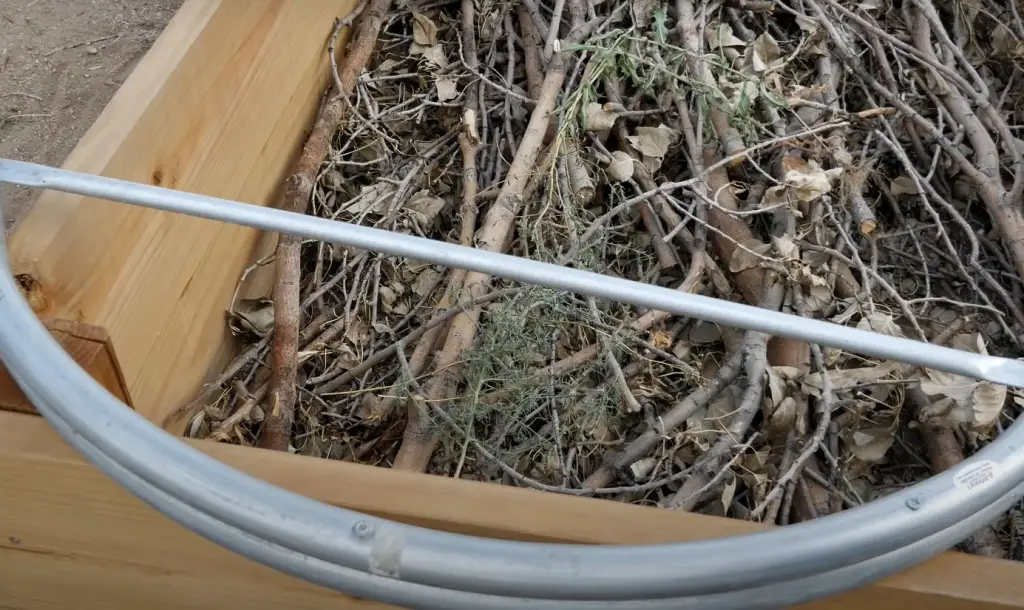
Once you’ve decided on the size of your garden tunnel, it’s time to start assembling your hoops. If you’re using hoops, simply connect the pieces together according to the instructions that came with your kit. If you’re making your own hoops out of PVC pipe, you’ll need to cut four pieces of pipe to the desired length and then connect them together with fittings.
Once your hoops are assembled, it’s time to start covering them with plastic. Garden tunnels can be covered with either clear or white plastic, but clear plastic will allow more sunlight to reach your plants. To attach the plastic to your hoops, simply use zip ties or heavy-duty tape.
Once your garden tunnel is covered, you’ll need to secure the ends. One way to do this is to bury the end of the tunnel in the ground and then cover it with a piece of cardboard or a tarp. Another way to secure the ends is to build a frame out of lumber and then attach the plastic to the frame.
How to Heat a Garden Hoop House?
There are two ways to heat a garden hoop house: passively or actively.
The passive approach relies on the sun’s energy to warm the air inside the structure during the day. Then, at night, that heat is released slowly back into the atmosphere.
If you want to use this method, your hoop house should be made of clear or translucent materials so that the sun’s rays can enter. Additionally, you’ll want to make sure that there is good ventilation so that the hot air can escape at night.
To heat a garden hoop house, you can use an external heat source, like a wood stove. This will raise the temperature inside the structure. This method is more expensive and requires more work, but it can be useful in situations where the sun is not providing enough warmth.
Useful Video: Garden Hoops with a Pallet – How to make
Conclusion
Garden hoops are a great way to add some extra storage space to your yard, and they’re also really easy and inexpensive to make. We have shown you how to make garden hoops using materials that are easy to find at most hardware stores.
If you follow these simple steps, you should be able to have your own set of garden hoops in no time! Have you made garden hoops before? What tips would you share with our readers?
References:
- https://www.groworganic.com/blogs/articles/how-to-make-a-hoophouse-on-a-raised-bed
- https://www.backyardboss.net/make-your-own-garden-hoops/





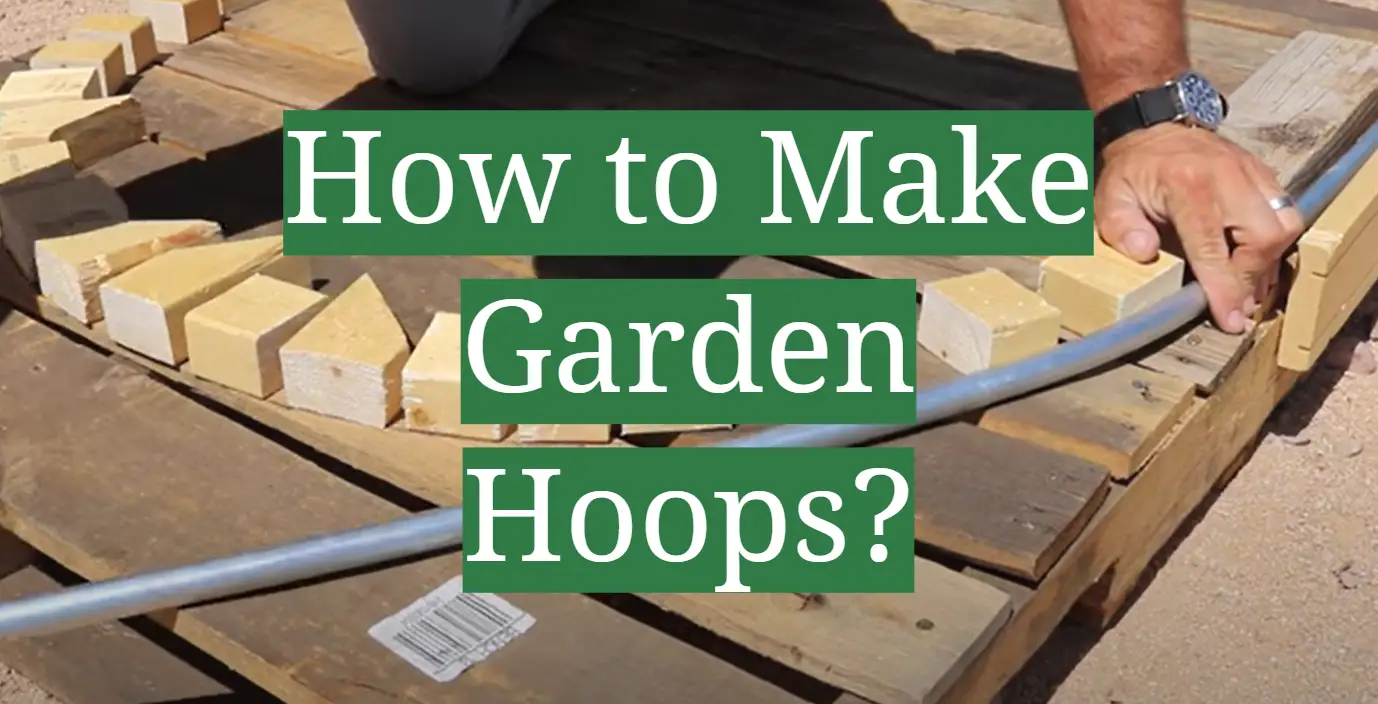




Leave a Reply
View Comments